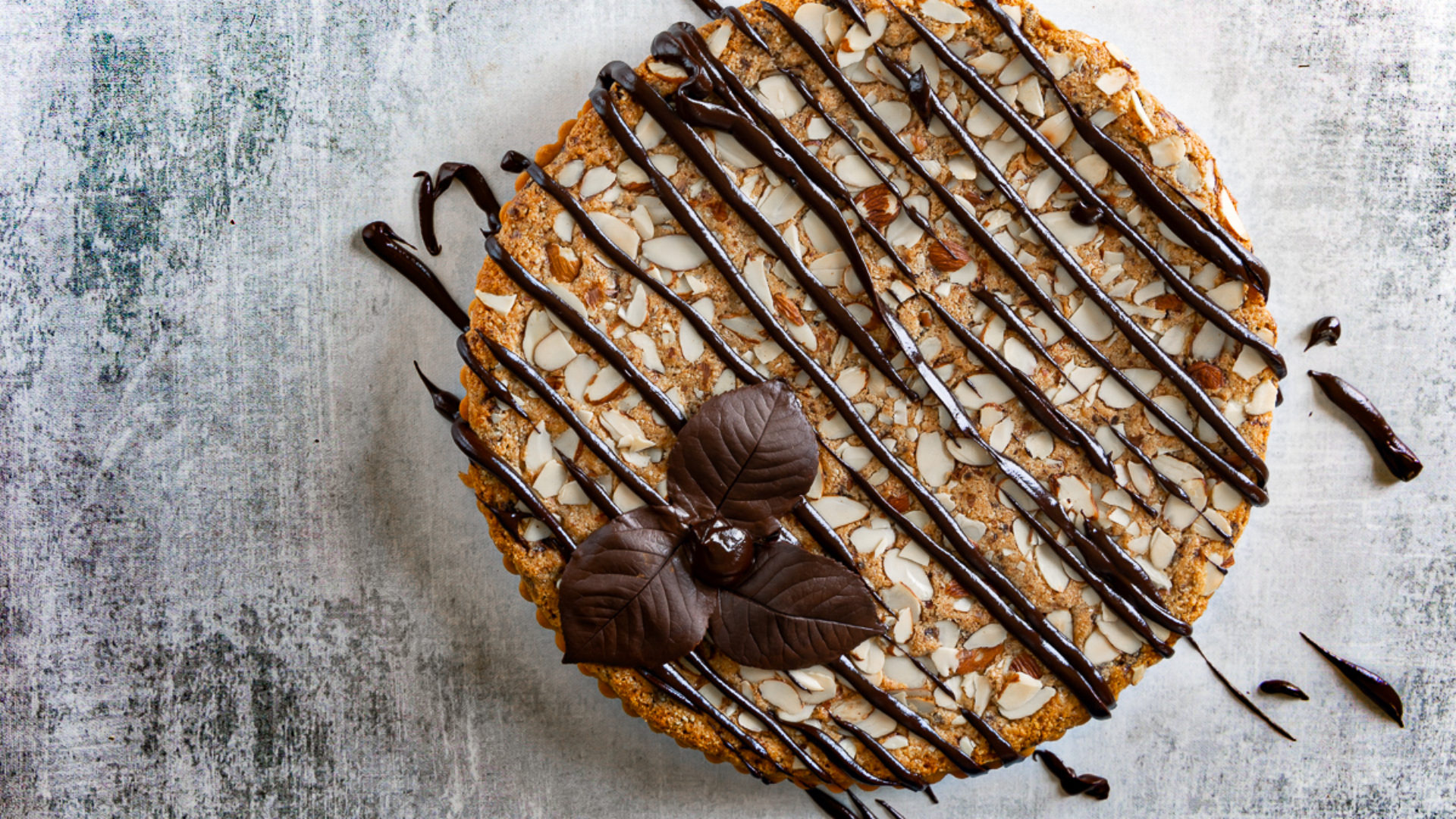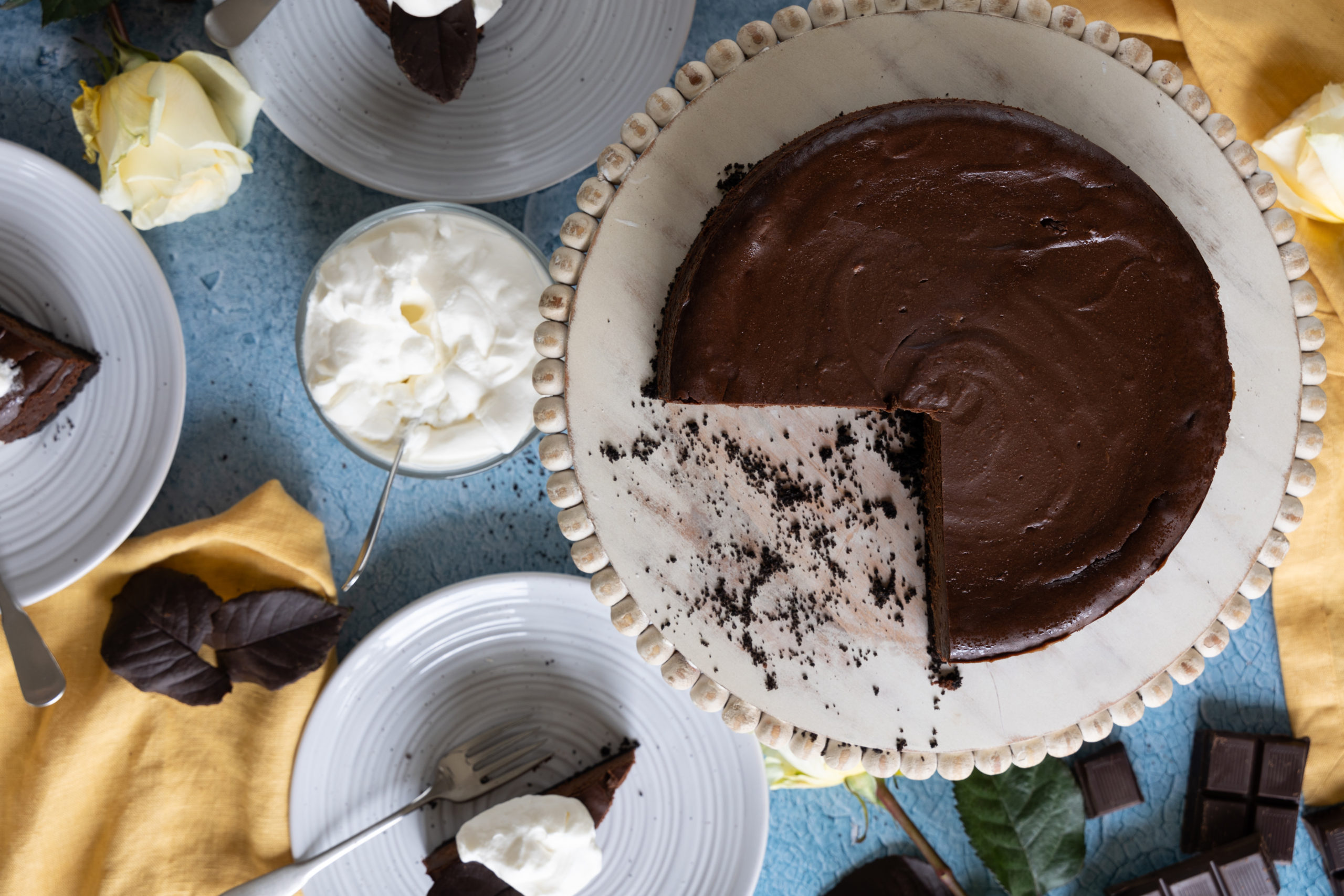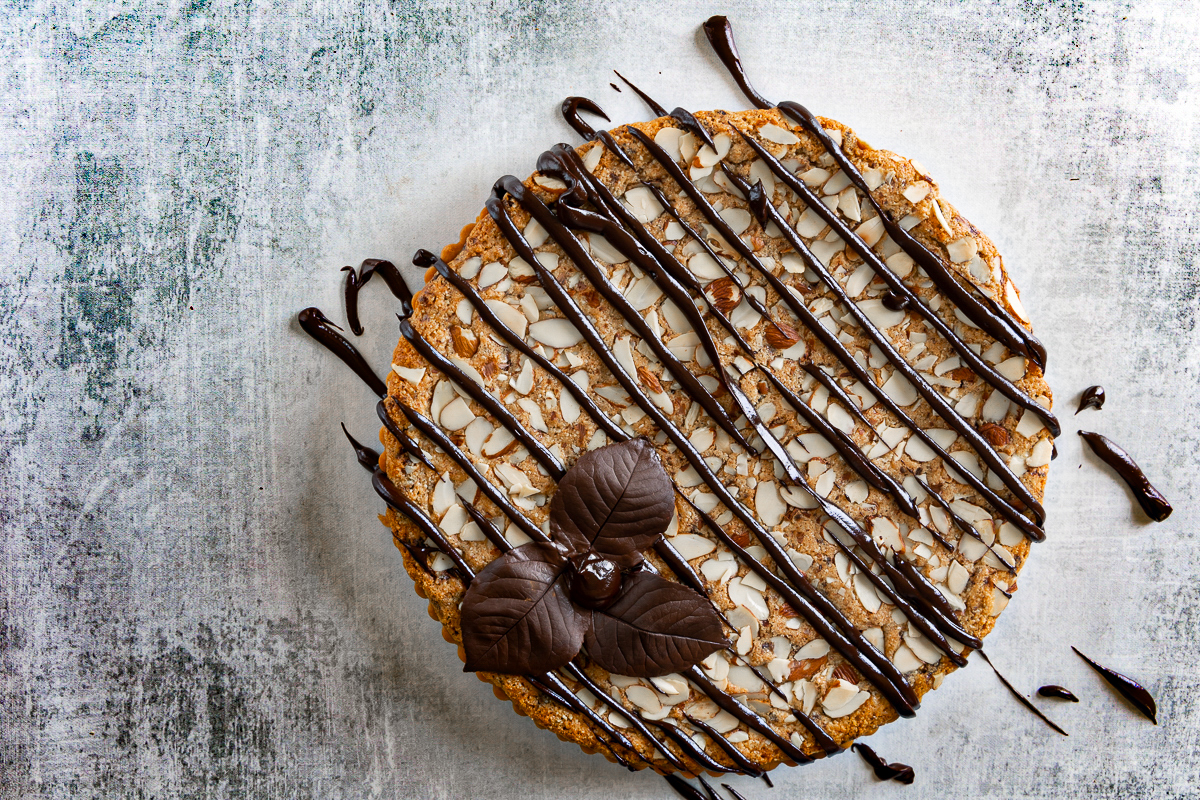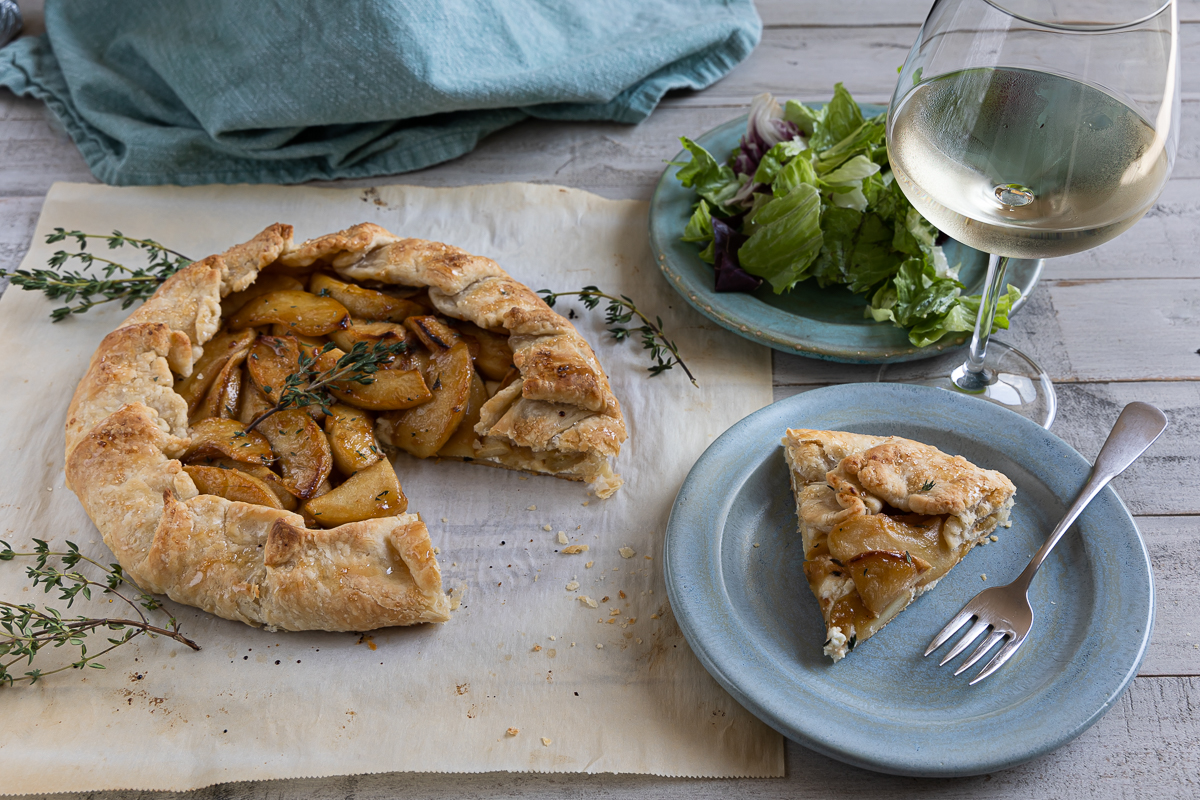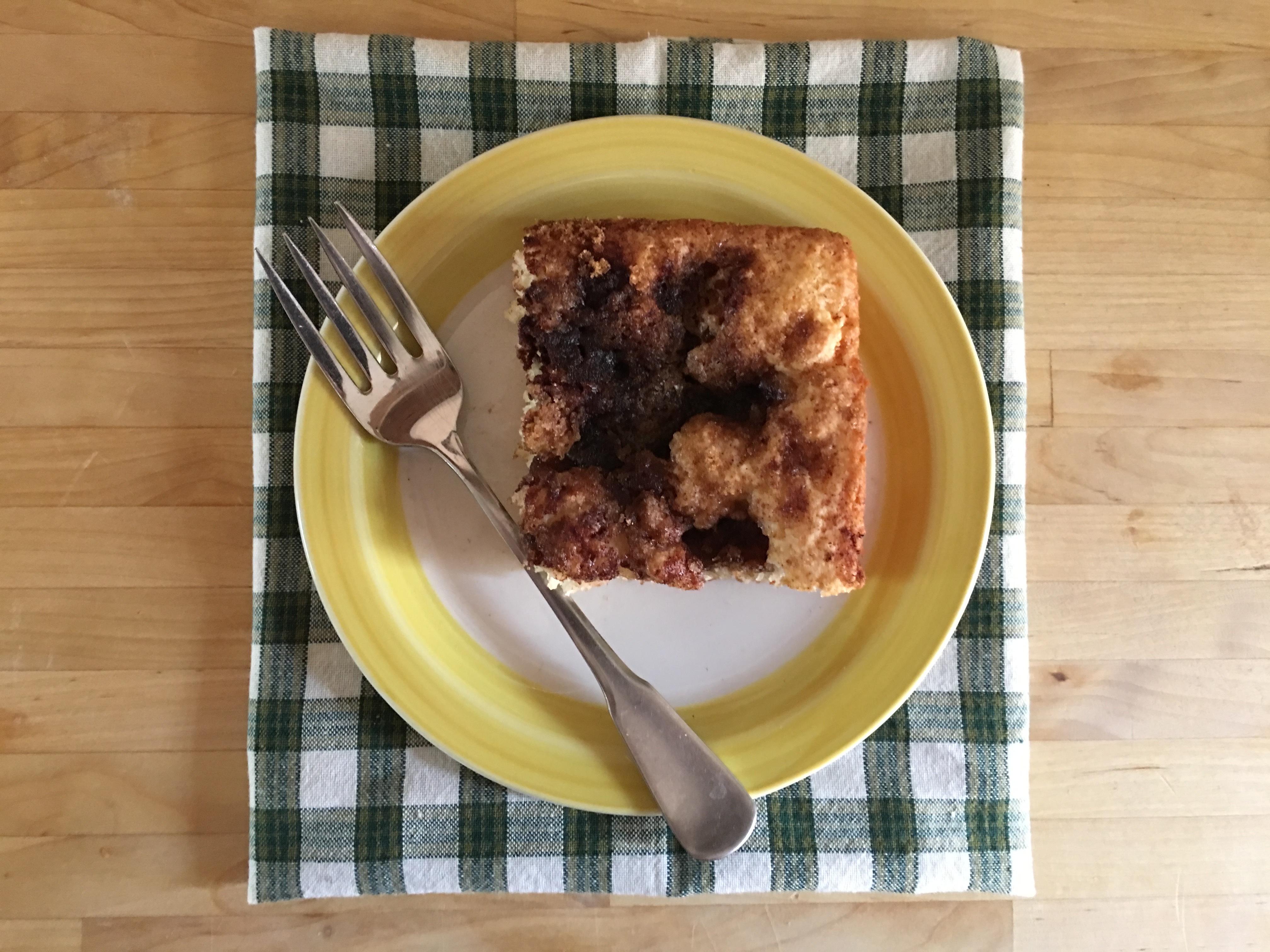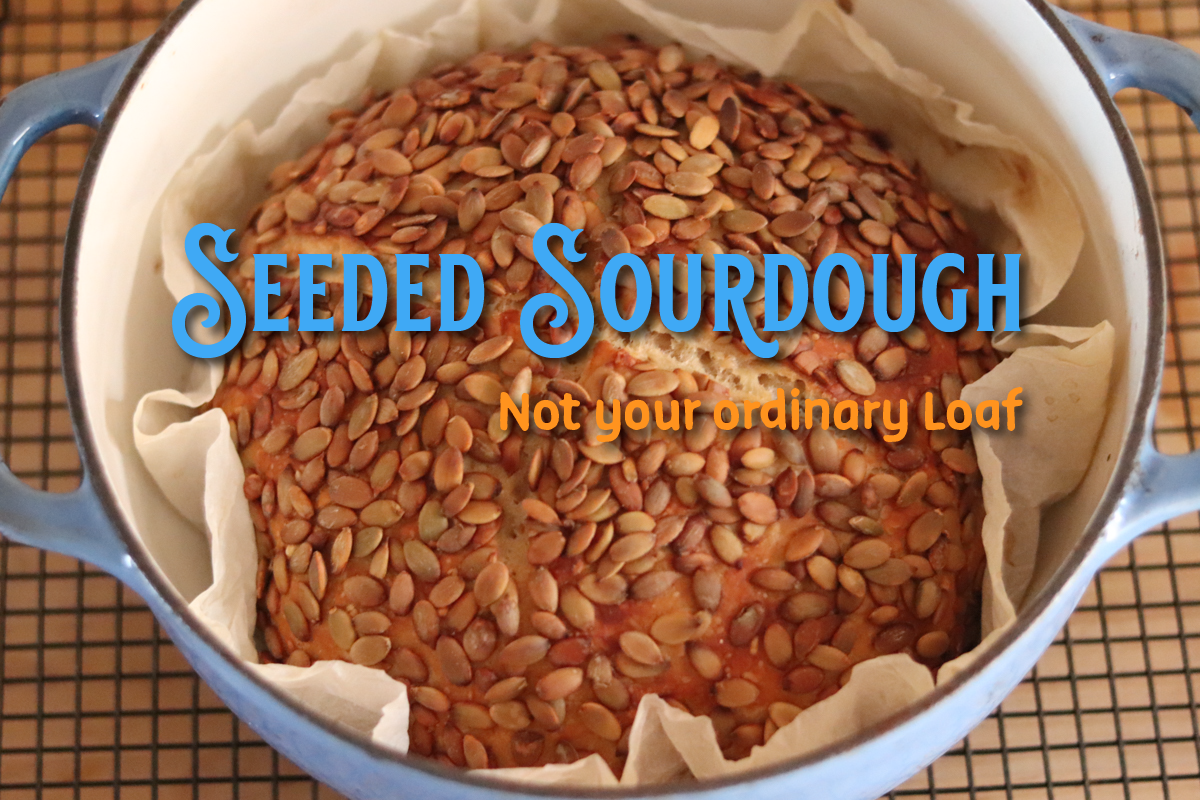Seeded sourdough bread, full of different grains and crusted with crunchy toasted pumpkin seeds, is really delicious.

Here is a version of sourdough that I have covered in pumpkin seeds. I brought a loaf of this seeded sourdough into the theater where I work, and it was gone very quickly. The seeds toast up nicely in the oven to make a beautifully crunchy crust. And the insides are full of different grains than the usual sourdough.

Amaranth is one of the ancient grains of the New World. It has it’s origins in Peru and has been domesticated for around 8000 years. The Aztecs grew Amaranth as a significant crop in Central America, This super grain is full of nutrients. ( wow, I just sounded like my mother!) Millet flour, which brings softness and mellow flavor to the bread. I love adding rolled oats to sourdough bread too like this sourdough coated in oats post I did last year. I love the character and flavor oats bring to sourdough bread. It also is fantastic with the other grains.

This Seeded sourdough bread has a different texture than the plain white floured versions I usually bake up due to all the different grains. But it is fabulous and delicious. It makes a great sandwich too. I made a tuna salad sandwich, and the pumpkin seeds added just the right amount of crunch.

Have you played around with different grains in your sourdough in your baking? Let me know in the comments below what you have added and how your bread turned out. I’d love to hear from you. If you need raising baskets, you can find some here on Amazon ( I get a tiny commission if you purchase from this link)


- 100 grams millet flour
- 100 grams amaranth flour
- 100 grams rolled oats
- 700 grams bread flour
- 750 grams water
- 150 grams active sourdough starter
- 20 grams of sea salt
-
The Night before or in the early morning
-
Feed your starter about 6 – 8 hours before you want to start the dough process. Let sit in a cool place.
-
At the same time, mix together in a very large bowl or plastic tub the Amaranth flour, Millet, Flour, Rolled Oats, and the bread flour. Add the water and mix it until moistened. It doesn't have to be perfect, just well mixed, to let the water and the flours become friends. Do not use a metal container. Cover with plastic wrap and let sit out while your starter gets ready for all the action.
-
Note: This is called autolyze and will help develop some incredible flavor. Most recipes call for a couple of hours, but my friend @brooklynsourdough taught me recently to have a very long autolyze.
-
When your starter has doubled or more and is bubbly. It may look like it has fallen in on itself; that is ok too. Measure out 150 grams and add it to the flour mixture.
-
Using your hands really gets in there and mix it to thoroughly combine.
-
Sprinkle the sea salt over the rough dough, and with your hands again, squeeze with your fingers and mash it until you can feel the salt crystals have dissolved. This may take a couple of minutes. You do not need to actually knead the dough; just make sure it has been thoroughly mixed.
-
Scrape down the sides of whatever container you are using and cover with a lid or plastic wrap.
-
Let rest for 30 minutes or so. You can extend this to 45 to 50 if your schedule needs it.
-
Uncover the bowl and grasp one edge of the rested dough. Pull up and stretch out the ragged mass of dough several inches above the surface. Bring the dough over onto itself and push it down towards the further edge. Turn the bowl ¼ and repeat, stretching the dough again. Continue this until you have come full circle. The dough should have gathered into a rough ball.
-
Cover again and let rest for another 30 minutes.
-
Repeat the folding process 3 more times. Each time the ball of dough will start out looking very flat and loose, but it will tighten more and more each fold. The final time the ball of dough will look very smooth, and the dough will have a lot of elasticity. It will gather into a nice tight ball.
-
Let the dough rest and rise until more than doubled with large bubbles very visible. It will take 5-6 hours in total from the first mix with the starter and the salt.
-
Line 2 rising baskets or medium bowls with cotton tea towels. Sprinkle generously with some of the pumpkin seeds.
-
Scrape the bread dough onto a floured work surface.
-
Next to where you are working sprinkle generously with pumpkin seeds.
-
Have a bowl of water nearby also to wet your hands before you coat in seeds.
-
Divide the dough into 2 equal pieces. Roughly gather them each into a ball and let rest for 10 – 15 minutes.
-
Using a dough scraper, pull the dough toward you onto a clean surface area. Using the tension and a slight circular motion continue to turn the ball until it forms into a tight ball. You should see many bubbles underneath the surface.
-
Very lightly wet your hands and go over the outside of the ball to barely moisten. Immediately roll the ball of dough in the seeds. Place the seeded ball of dough seam side up into the cloth and pumpkin seed lined bowl. Pinch together the dough if there are any rough surfaces.
-
Repeat with the second ball of dough.
-
Sprinkle any left-over seeds to coat the tops of the dough.
-
Wrap each filled basket with plastic wrap.
-
Let sit in the refrigerator for 24-48 hours. I have found the best for sour flavor is in the 36-hour area. But it all depends on your needs and timing. To get the fantastic blisters, it needs to retard for at least 24 hours or longer.
-
About 1 hour before you want to bake, place 2 dutch ovens in a cold oven with the lids askew. Let heat for one full hour. Pull the loaves out of the fridge when you are ready to bake.
-
Cut 2 parchment paper rounds approximately 12 inches across. Thoroughly crumple and wet under a running faucet. Place one down on a work surface smooth it out.
-
Unmold one of the loaves onto the center of the wet parchment paper.
-
Quickly slash the loaf. For the seeded loaves, a simple cross will work, it is hard to do a fancy slash.
-
Using oven mitts, carefully remove one of the dutch ovens and place it on a heatproof surface.
-
Lift the slashed loaf by the parchment paper and carefully place it into the hot dutch oven. Using an oven mitt Immediately place the hot lid on to the filled dutch oven and put it into the hot oven.
-
Quickly repeat with the second loaf.
-
Bake covered in the oven for 20 minutes.
-
Uncover the dutch ovens and bake for an additional 20 – 25 minutes. The bread should be deeply golden and sound hollow when tapped. Unmold onto a rack and remove the parchment paper.
-
Let cool completely before slicing, if you can wait that long. It will slice easier.


